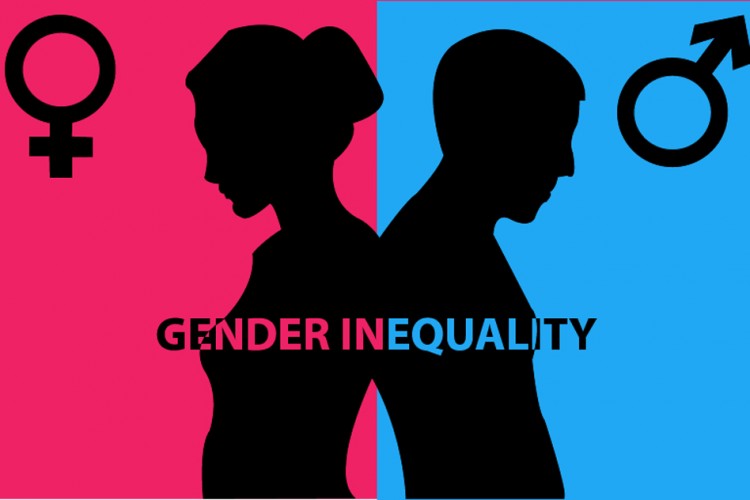Mar 5, 2017 | Uncategorized
NOTE: What follows was originally written in the run-up to Inauguration Day and prior to the Women’s Marches. The sheer numbers of men, women, children, queer, transgender that participated — worldwide — spoke for themselves. What we didn’t know at the time was how this galvanizing moment ultimately set the stage for an even bigger, more profound movement that is taking shape in real time. The impetus behind the marches — the fight for survival — is now magnified to global scale and hopefully will translate into a similar, powerful and peaceful cooperation. x The difference now, though, is that what was originally about survival is now also about character and conviction. Women led the way with a strong voice and strong numbers. Now it’s up to everyone, including Republicans and Republican lawmakers to raise their voices, be counted and resist. If we don’t, we’re complicit and ‘Never Again’ will be robbed of its passion and meaning. x Since Election Day, I (like so many other women) have been living in a state of almost paralyzing denial, fear and dread, despairing that — with the stroke of a pen — so much that’s been hard-fought-for and won will be obliterated. x But on Inauguration Day, the anticipation stopped, the new world order was ushered in and we all became players in a four-year reality media event writ large. January 20, 2017 changed the surreal to the real and we had a choice to make. We could keep wringing our hands or we can recognize the moment for what it is: a true inflection point in the struggle for...

Oct 12, 2016 | Uncategorized
A recent article in the Wall Street Journal offered compelling research that affirmed employers’ increasing demand for “soft skills” in today’s workplace, including — but not limited to — communication, organization and punctuality. x Their official findings? x “In a Wall Street Journal survey of nearly 900 executives last year, 92% said soft skills were equally important or more important than technical skills.” x But…and this is a big but… ’89% said they have a very or somewhat difficult time finding people with the requisite attributes. Many say it’s a problem spanning age groups and experience levels.’ x As a leadership consultant for many organizations and leaders across industries, this was, to me, old news, as I’ve been banging this drum, addressing and teaching/coaching/ preaching on this need for years. x The article, while curiously geared towards job seekers (just listing the skills on a resume doesn’t make it so) rather than employers, offers too pat a prescription for the long term health of an organization: glibly declaring that employers (finally ) see the value of these ‘soft’ skills and that applicants should now accommodate just by listing them on a resume does not equate to culture-changing or culture building initiatives. x Why? Because the approach is thin and, presupposing that these new hires actually have the desired skills, it couldn’t possibly scale fast enough. Perhaps clever tips for getting hired but insufficient for equipping an entire organization with the skills proven to be critical to creating a culture of innovation and productivity. Bottom line: forward-facing leaders can’t afford to passively hope these skills will defy gravity and trickle up. Instead, creating a lasting culture that places value on critical soft skills requires deliberate, consistent cultivation (through coaching and coordinated initiatives), mindful modeling...

Jul 21, 2016 | critical thinking, gender roles in business, women
Not long ago I spoke with the leader of a small professional firm about diversity and inclusion concerns within her organization. She — like many of her peers — are baffled at why their firm appears largely unchanged after implementing countless diversity programs and affinity groups, including one for women, another for the LBGT employees, another for African American employees and more. All well-intentioned efforts, but making little difference. Here’s why affinity groups aren’t working As the firm’s principal continued to lay out their affinity groups — connecting African American employees with other African American employees, connecting women with other women, and connecting LBGT employees with others like them — I thought of SeedsOfPeace.com. This is a program that sends teenagers from communities in conflict (i.e. Israeli teenagers and Palestinian teenagers) to camp together to build respect, relationships and leadership skills. Rather than continue in the silo-ed thinking so pervasive in corporate America today — and represented by these affinity groups that are entirely lacking diversity within— organizations would do well to follow the example of Seeds of Peace. It is always the cross-polination of ideas and respect — only born from relationship and interaction— that begins to erode the real enemy to corporate diversity and inclusion: unconscious bias. Affinity groups do the opposite, actually encouraging people to flock together in a group designed to eliminate diversity. Working further against true inclusion, these groups define members by their “qualifier:” woman, gay, black, instead of by their skills, interests, achievements or even corporate role. While strong relationships and unity are built within each affinity group, the divides between these groups...

Jun 30, 2016 | Uncategorized
It was recently reported that 28 high-profile companies have signed a White House pledge to tackle pay inequity within their own organizations. A mere twenty-eight out of how many American companies have pledged to address the pay inequity going on under their noses for decades… or more? While I’m happier to have the pledge from these companies than not, all the backslapping, self-congratulations and victory dances strike me as ridiculous, bordering on offensive. To begin with, the pay gap — or let’s call it by it’s rightful name, pay discrimination —is such old news that companies that have yet to rectify it by 2016 should be publicly scorned, not celebrated. And the fact that the Department of Labor — despite having the progressive-ish Carter, Clinton and Obama in the White House since the 1970s — is only now getting around to ‘updating’ its sex discrimination guidelines for the first time since then, only further begs the question: where has everyone been and what have they (not) been thinking??? And oh, by the way, in the post-gender era, why aren’t we broadening the conversation for an ‘all gender solution?’ While there’s much that should have and could have been done already, the onus here is not just on our elected officials, including Boards of public companies or C-suite executives. Instead — and to keep it simple for those leaders slow to catch on – let’s keep this binary for the moment — we women also have to bear some responsibility. It’s nice that the Federal Government is allocating $50m to both teaching community college students to negotiate for better starting wages and to improving the portrayal of women in the media, etc. Sadly, this will create a slow institutional turn, at best....

Jun 10, 2016 | Uncategorized
In a recent column in the New York Times, the author respond to a woman who was “hit on” while in line at a coffee shop and advises her regarding how she may turn this “come on” into a career-enhancing contact. While I acknowledge the Workologist’s optimism and more importantly, his humanism, his efforts are naive, tone deaf and grossly irresponsible, likely harming this woman’s career rather than promoting it. ‘Anonymous’ depicts a fairly common scenario encountered by women in business and while it’s harder to handle as a young career woman, it continues through the years regardless of age or seniority. In many cases, though, overtures like the one made by the ‘older man’ are less a function of age or seniority and much more a function of power. In my opinion as an executive coach who works with professional women up and down the pipeline and as a woman who has encountered such overtures both at the beginning of my career and in real time, I unequivocally say that this young woman should NOT — under any circumstances — pursue any kind of relationship with this man. Forget about a platonic relationship’s being, as the Workologist suggests, a ‘long shot;’ there is no platonic relationship worth pursuing here as his premise was not that: trying to transform social advances into professional advantage is simply a non-starter and a terrible idea. This is sexual politics and the power relationship was established at the get-go, with this man leveraging his age and presumed influence to ‘come on’ to this woman. In reality she wants something from this man which automatically keeps her at...

Jun 3, 2016 | Uncategorized
For the last several year, The Leaders’ Lens — dtkResources’ curated and annotated roundup of current leadership articles and salient news items — has been sent exclusively to my executive clients. Designed to contextualize volumes of content, The Leaders’ Lens effectively cut through the clutter by providing executive leaders with the critical perspective they so needed to access more nuanced and strategic thinking. Based on its success, we’re now filling a huge need by offering The Leaders’ Lens articles — providing pushback, depth, and applicable takeaways — for an expanded audience that’s more accustomed to consuming mass marketing advice peddled by amateurs. Most well-meaning, but amateurs nonetheless. Instead, we’re addressing this often misguided and occasionally irresponsible advice presented by otherwise discerning editors — by posting this exclusive material on my own website as well as on various news outlets in a comment or in the form of letter to the editor. My reasoning? At its best, mass market advice: Is elementary and simplistic, addressing the widest — and commercially advantageous — audience possible, with little applicability on an individual level; Is remarkably unnuanced, ignoring the complexities of the challenges currently facing American business and its workforce; Is so homogenized that it lacks guts and grit. Written (or filmed) generically for the broadest demographic, it isn’t capable of speaking specifically to the real needs of individual employees, companies and industries; At its worst, this generic advice — prescribed for the masses — risks inflicting outright harm to individual careers. So, how can an evolved and evolving professional make any use of the mass market material as they try to grow and develop themselves and their organizations? To help, I’ve decided to begin publishing...

May 25, 2016 | leadership, networking, women
I make it a point to read the Workologist column in the Sunday New York Times Business Section whenever it appears, not because of the “sage” advice offered… but actually despite it! The responses to real world topics of tremendous and timely significance often lack not only a true understanding of climate, culture and social norms of the workplace but also the context essential to dispense sound, actionable and most importantly, responsible advice. The NYT has taken note of my thinking and published responses both in the paper and on the website but pushback isn’t always published so the Workologist’s advice goes largely unchecked. This is why I’ll be publishing my thoughts on mass market advice here… where the focus is on real work and real results… in real time. As an executive coach focused on professional firms similar to the one mentioned in the article, I’ve learned to embrace (and never ignore) the complexities, nuances and culture inherent in each different organization. However, in an article about ‘mandatory’ fun at work, the Workologist offered a prescriptive solution without fully considering the profound implications of the situation or more importantly of his naive and fairly tone deaf advice … Here’s my — until now — unpublished response: In suggesting a strategy to push back against the questionable merits of “mandatory fun,” I feel that providing any practical, effective solution warrants gathering more information. We know that the company in question is a financial firm but we don’t know its size or whether it’s privately or publicly held, distinctions that can absolutely affect the eventual remedy. For the sake of argument, I...

Mar 11, 2016 | gender roles in business
It took until only recently for the mass media to echo what I’ve been speaking, thinking and writing about for years: silo-d thinking is at the root of so many corporate ills, not the least of which is too few women at the top of almost any industry. As I advocated for various solutions around eliminating unconscious bias, I focused on what I called the “two-gender” solution, the thinking being that gender silos (women’s affinity groups, old boys club) promote exclusion rather than inclusion. And, while it’s critical to have awareness in the workplace, the real change will only happen when we socialize our daughters…AND OUR SONS…differently. I wrote about this in an article titled, “The Two Gender Solution.” Of course, the hands of time continue to turn and the evolution of our culture should continue to challenge our thinking. I know my thinking shifted as my awareness increased: as we enter Women’s History Month, everyone would benefit if leaders and individuals took this conversation to the next level to reflect reality. We’re talking an ALL gender solution. All, as in male, female and everything in between. We can’t have an inclusive corporate culture until we acknowledge and adopt this thinking. I began discussing the changing complexion of the American workforce in 2010, but six years later we now have the opportunity not only to employ and embrace different cultures and different generations, but also to do the same for the whole spectrum of sexual identity. Now more than ever, we cannot afford silo-d thinking. The marketplace is demanding inclusion… a leadership model that blends the best of all...

Mar 11, 2016 | gender roles in business
It’s Women’s History Month, 2016. For more than a decade, I’ve been working and waiting expectantly for the paltry 17% of women in top leadership positions to increase. In the beginning, the more attention the mainstream media gave this topic, the happier I was. When a new book for women in leadership was released, I read it with high hopes. When a new female CEO took to the airwaves to espouse the importance of having more women at the top, I championed the cause. But to what end? We’ve ‘leaned in’, ‘cracked the confidence code’ and discussed the ‘feminine mystique.’ But the needle stays stuck at 17% . And all the talk? Well, it has been largely palliative and — as the numbers prove — ineffective. So, today I echo what I wrote back in 2014. Ladies, Take Your Seats. Figuratively. Literally. Read the article — HERE — that acknowledges the corporate cultures and mores that — yes — make it more difficult for professional women to ascend to leadership but also challenges women to own their part… and do their part. Instead of waiting for permission or the invitation (most of the time, it’s not coming!) simply sit down. Real work. Real results. Real...









 Dani Ticktin Koplik —
Leadership consultant, executive coach, change agent and passionate professional development expert and speaker. You can learn more about Dani and her clients by visiting dtkBio page.
Dani Ticktin Koplik —
Leadership consultant, executive coach, change agent and passionate professional development expert and speaker. You can learn more about Dani and her clients by visiting dtkBio page. 